In Sardinia, approximately 50 km from Cagliari, Villasimius is one of the most famous and highly regarded coastal towns in southern Sardinia. The beautiful landscapes of Villasimius, with their white beaches of fine sand, crystal-clear sea, and the scents and colours of Mediterranean vegetation, make this place a corner of paradise.
Unspoiled nature, outdoor activities, culture, good food and traditions: Villasimius is a perfect destination for a trip complete of experiences and unforgettable views.
With our travel guide, we tell you what to do and see in Villasimius.
Are you ready to discover this beautiful seaside resort?

What to do and see in Villasimius: a complete travel guide
In south-eastern Sardinia, Villasimius is a resort that enchants visitors with a mix of unspoilt nature and culture.
What certainly strikes the eye at first sight are the beautiful beaches, most notably Punta Molentis and Porto Giunco, bathed by a crystal-clear sea and perfect for snorkelling and diving.
The nearby Protected Marine Area of Capo Carbonara offers the opportunity to embark on boat trips to discover many small, hidden coves, where you can swim peacefully and rejuvenate mind and body, immersed in the natural colours of the surrounding area.
In the peninsula of Capo Carbonara, lovers of animals, especially birds, will be able to observe pink flamingos in their natural habitat, the Notteri Pond. A unique experience to see these delicate and elegant birds up close.
In addition, the coast and inland areas are perfect for hiking or cycling, surrounded by breathtaking landscapes and offering stunning sunrises and sunsets.
Not only beaches and nature. In Villasimius, you will also find interesting cultural attractions, such as the archaeological site of Cuccureddus, the Archaeological Museum, and the former penal colony, all of which testify to the history and traditions of this area.
And after a day exploring this beautiful coastal resort, it's time to taste the typical dishes of the tasty local cuisine.
In Villasimius, you will be spoiled for choice between restaurants, bakeries, and pastry shops where you can taste the delicious, typical dishes of Sardinian tradition, such as sa costedda, malfatti, fried ravioli, and much more.
Beaches, outdoor activities, cultural attractions and travel tips: discover Villasimius with our travel guide!
Listen to the podcast version of the article with Monna Lisa and Leonardo's voices
The most beautiful beaches of Villasimius: Punta Molentis
Villasimius is a paradise of beaches. There are really many and for all tastes: white beaches of fine sand and beaches of pebbles or rocks, all with spectacular seabeds and crystal clear water.
One of the pearls of Villasimius is the beach of Punta Molentis, a beach in the shape of an arc, protected to the north by a small promontory and to the east by a set of rocks.
Punta Molentis is divided into several coves by rocks scattered on white sand. All around, there is a green Mediterranean scrub and many cacti with multicoloured flowers that fill the air with their scent. The white sand is bathed by turquoise waters, and the colours of the rocks, vegetation and sea create a beautiful picture.
The beach and the promontory are part of the marine area of Capo Carbonara, and the name of the beach comes from the Sardinian word molenti, which means donkey. The donkey was the animal used to transport the granite extracted from the surrounding granite quarries.
On the hill behind the beach, the remains of an ancient nuraghe—a megalithic stone structure dating back to the Bronze Age—are also visible.
The beach offers essential services. There are toilets, refreshments and a small restaurant.
Punta Molentis is about 3 km from the town. Near the main road, there is a large parking lot. From here, you reach the beaches through white streets that can only be reached on foot.
How to get to the beach of Punta Molentis
Access to the beach is closed (maximum: 600 people).
A reservation is not mandatory, but recommended.
Reservations for beach parking at Punta Molentis are only available on the official Pass Villasimius website.
Access is also allowed in the order of arrival. Still, during the high season (1 June - 31 October), it is advisable to book in advance.
It is possible to book by midnight the day before the reservation date.
It is not possible to cancel or change dates for reservations that have already been paid.
For car rental, the precise license plate number must be entered by midnight on the day before the booked date.
You can access the beach by presenting your downloadable booking receipt after making the payment. The payment receipt can be shown to the operator from any digital device.
The beach is located in a protected marine area, so it's essential to respect the environment.
Porto Giunco: one of the most beautiful beaches in Villasimius and Sardinia
Porto Giunco is a corner of the Caribbean in Sardinia, and those who pass by Villasimius can not miss this stretch of fine sand, bathed by a sea with infinite blue shades.
The beach is spacious and surrounded by dunes covered with Mediterranean scrub, junipers and lentiscs that scent the air. The seabed is shallow and sandy, making it ideal for families with children.
This strip of fine sand is situated between two promontories that shield it from the winds, making it a perfect spot for relaxing baths.
The beach of Porto Giunco is easily accessible from the centre of Villasimius and Cagliari. Near the beach, a large parking lot is located, from which a path, immersed in a grove of eucalyptus, leads to the beach.
Along the path, you pass the pond of Notteri, located behind the beach. The pond, inhabited by pink flamingos and other migratory birds, was once rich in reeds from which comes the name of the beach.
Due to its particular shape, the beach of Porto Giunco is called 'of the two seas', because it is between two bodies of water: the pond of Notteri and the Mediterranean Sea.
On the beach, you will find all beach services, kiosks, bars, hotels and residences nearby.
Additionally, Porto Giunco is located within the marine area of Capo Carbonara. It is an ideal destination for surfers and snorkelling enthusiasts.
A guide to the beaches of Villasimius: from Capo Carbonara to Punta Molentis
In addition to the famous Punta Molentis and Porto Giunco, Villasimius offers one beach to explore each day. The coast of Villasimius stretches from Porto Sa Ruxi in the west to the famous beach of Capo Molentis in the east. Let's take a tour of the main beaches of Villasimius!
Timi Ama
Between the beaches of Porto Giunco and Simius, the beach of Timi Ama offers a beautiful view. It is one of the most admired on the coast of Villasimius.
White and fine sand, crystal blue sea surrounded by pine forest and dunes. The beach is free to access. It is equipped with all valuable services, including a large parking area, a bar, and the rental of deckchairs, canoes, and pedal boats. It is worth noting that during the high season, the area becomes bustling.
Helpful information on access to the beach of Porto Giunco
The beach of Porto Giunco is not closed.
It's a beach with free access, partly free and partly equipped.
It is essential to note that during the high season (summer months), the facility may be subject to restrictions to ensure a pleasant experience for users and to protect its environment.
During the high season, it is advisable to arrive early to secure your place.
The beach parking is for a fee.
People with disabilities can easily access the beach thanks to special ramps.
The beach can also be reached on foot from the centre of Villasimius, following the signs for the marina and then continuing on the path that crosses the eucalyptus forest and skirts the pond of Notteri.
From the beach of Simius (the closest to the centre of Villasimius), another, more naturalistic path starts, with ideal stretches for snorkelling.
The journey time varies depending on the chosen route and can last between 25 and 45 minutes. We recommend wearing comfortable shoes.
Simius
Simius beach is the closest to the centre of Villasimius and can be reached on foot or by bike. Fine and white sand wet by a calm and transparent sea.
This shallow beach is ideal for families with children, as well as for snorkelers. A few meters from the shore is a saltwater shoal where crossbow fish swim.
The beach is equipped with all necessary services, including refreshments, toilets, rental umbrellas, and sports equipment (pedal boats, canoes). It is accessible to the disabled.
Access to the beach is free, with no restrictions on the number of people. During high season, it is advisable to arrive early to secure a spot.
The beach has paid parking.
Is Traias
Next to the beach of Simius, about 4 km from the centre of Villasimius, we find Is Traias, a small beach set in a bay protected by two small rocky promontories.
This beach is characterised by fine sand, smooth pebbles at the foot of the promontories, and a Mediterranean vegetation that gives it a wild appearance.
White, blue, and green are the predominant colours of this beach, making it ideal for diving and snorkelling. The beach of Is Traias is open to the public. It's less crowded than the nearby beach of Simius, but is still chosen by many in high season.
It has only one refreshment point and a nearby parking lot. Not far from Is Traias, there is another small golden sand cove: Porto Luna.
Manunzas and Riu Trottu
Those who like the quieter and less crowded beaches will appreciate the beach of Manunzas. This beach is situated in a barren landscape with minimal vegetation, remaining uncontaminated and wild. The beach is of grey and yellow pebbles, numerous stones and little sand.
The sea is a deep blue, with a rocky bottom and an immediate drop-off. Manunzas is a beach with free access and less frequented than the others. It does not have beach services.
Riu Trottu
Riu Trottu beach overlooks the famous bay of Punta Molentis. It is a beach of light pebbles, more or less prominent, from the blue-green sea. The seabed consists of rocks near the shore and then becomes sandy, similar to the beach of Punta Molentis.
The beach is characterised by a dense Mediterranean scrub, junipers and lentishes. Behind it is the bed of Riu Trottu, from which the beach takes its name. The beautiful view from this beach also includes Isola dei Cavoli and Capo Carbonara. Access to Riu Trottu is allowed to a maximum of 150 people and has a fee.
The beaches between Capo Carbonara and Capo Boi
Now we explore the beaches between Capo Carbonara and Capo Boi!
Cala Caterina
Cala Caterina is a pearl surrounded by the beautiful Mediterranean scrub. Located in Caterina, near the old Fortress, is a beach divided into several coves by rocks.
The sand is white, the sea is transparent, and from the low, sandy bottom, smooth stones appear, all around the green of the Mediterranean scrub and the flowers of the cactus. It's a beach for those who love tranquillity and free access.
The beach of Riso
Riso Beach is located between the Marina of Villasimius and the long sandy beach of Campulongu. It is a unique beach, formed by white and brilliant granite quartz. These pebbles, smoothed by the sea, resemble grains of Rice, making this beach one of the most famous in southern Sardinia.
The white pebbles, the white sand, the transparent sea and the surrounding green hills create an exceptional panorama, especially at sunset. On the beach and nearby, various valuable services are available. The beach is free to access.
Campulongu
Campulongu is a long, white beach of fine sand and a transparent sea, surrounded by Mediterranean maquis. It is one of the most popular and well-equipped beaches in Villasimius, but this does not detract from its beauty. A portion of the beach is managed by bathing establishments offering paid services. At the same time, another part is open to the public without charge. Parking is also available with a fee.
Cuccureddus and Campus
Cuccureddus is a beach for the more adventurous.
This small beach of fine white sand is enclosed between two cliffs and surrounded by hills covered with Mediterranean vegetation, from which you can enjoy a beautiful view of the sea.
Land access is not always possible, as the surrounding land is private. It is possible to access the site by sea via boat excursions or, for swimmers, from the beach on Campus, by crossing the rocks. In this beach, services are limited or absent.
A curiosity: on the hill behind the beach is the archaeological area of Is Cuccureddus, which preserves the remains of a community and an ancient Phoenician port.
Campus
Campus beach is another of the most popular beaches in Villasimius. It is located between Campulongu and Porto Sa Ruxi. It is long, of fine sand, surrounded by reeds and Mediterranean maquis.
It's ideal for those who love to walk without giving up comfort. A portion of the beach is managed by bathing establishments offering paid services. At the same time, another part is open to the public without charge. Parking, disabled access and a snack bar are available.
Piscadeddus and Porto sa Ruxi
The beach of Piscadeddus is a small cove sheltered from the wind, with a transparent sea, white sand, and surrounded by green Mediterranean scrub.
It is a beach that does not offer services, so it is good to organise with food, water and an umbrella. It offers free entrance, and a parking lot with limited spaces is available near the beach.
Porto sa Ruxi
The beach of Porto Sa Ruxi is the first beach of Villasimius that you meet coming from Cagliari. It is a white sandy beach with shallow waters from which rocks emerge here and there.
Bathed by a transparent sea, it is surrounded by sand dunes and Mediterranean scrub rich in juniper. It is a beach protected from the wind, with calm waters and an evocative, wild appearance. Free access and all services are available.
In our guide, we have presented the main beaches of Villasimius, but we are sure that during your trip, you will discover more!
What to see in Villasimius: the Protected Marine Area of Capo Carbonara
The protected marine area of Capo Carbonara is an excellent and unmissable natural attraction of the territory of Villasimius.
With an extension of 86 km, it is divided into two bays by the homonymous promontory. It develops from Capo Boi to the island of Serpentara.
It is a succession of rocky coasts, long beaches, green areas, and lagoons, featuring unique and varied landscapes within an ecosystem that serves as a natural habitat for many plant and animal species.
This stretch of coast, where fishing is prohibited, is unique for the clarity of its waters and the paradisiacal white beaches that alternate with rocky coves and headlands.
It is also part of the protected area, the pond of Notteri, that hosts birds such as the peregrine falcon, the calandro, the pink flamingo and the marangone.
The marine scenery of the protected area of Capo Carbonara is spectacular. Among the yellow of sea daisies, the red of gorgonians and poseidonia, live swarms of capons, corvids, dentex, shrimps, octopuses, saraghi, mullets and many other organisms.
Finally, in the marine area of Capo Carbonara, there are also protected dolphins and turtles that are often visible near the island of Serpentara, especially at sunrise and sunset.
Snorkelling and boat trips in the Marine Protected Area of Capo Carbonara
What better way to explore the depths of the protected marina of Capo Carbonara by snorkelling, diving or boat trips?
Every day, especially in high season, many boat trips depart from the port of Villasimius to admire the flora and fauna of this beautiful sea. Excursions, of all types and for all tastes, are available on board boats, rubber dinghies, and fishing boats and can last from a few hours to a whole day.
During the boat trips, you can stop for snorkelling at special points of interest, such as the island of Cavoli or the dry fish Balestra. Excursions can also be guided by environmental experts or guides who provide detailed information on marine life. Some excursions include lunches and/or aperitifs on board, and others focus on exploring hidden coves and beaches.
Participating in a boat excursion, you can admire the main points of interest in the protected area, including the island of Cavoli, the bay of Punta Molentis, Cala Sinzias, the island of Serpentara, and their stunning landscapes.
A curiosity: in the depths of this sea, you can also see wrecks from every era, such as an Aragonese sailing ship (15th century), a Roman galley, the ferry Elba Ferry and the steamer Egle (1943). In addition, near the island of Cavoli, there is also the statue of the Madonna del naufrago. This submerged statue is a symbol of Villasimius and is the object of great popular devotion.
Finally, we point out that in Villasimius, it is advisable to always bring a mask, fins, and a snorkel, as you can snorkel independently and admire this marine paradise at any beach you find yourself.
Sports and outdoor activities in Villasimius
Villasimius is located on the border between land and sea. This unique location offers a great variety of views and many routes to explore on foot, by bike or on horseback, crossing landscapes of great beauty.
Between the green Mediterranean maquis, archaeological sites, ancient towers overlooking the sea, and traditional farms, each path offers a unique experience.
A classic and unmissable route is the one that leads to the lighthouse of Capo Carbonara. The Lighthouse of Capo Carbonara is situated at the extreme tip of Capo Carbonara. It is undoubtedly a suggestive landmark in Villasimius. The walk is ideal and straightforward for admiring ancient coastal towers, cliffs, and clear waters. A spectacular panorama to photograph!
Itineraries and walks for everyone
Another easy path with beautiful views is the tour of the Tower of Porto Giunco. It is a loop route, which develops between the beach, the pond of Notteri and the Mediterranean maquis, until you get to the Tower.
Another nice walk that we recommend is the one that starts from the parking lot near the Fortezza Vecchia and reaches the beach of Porto Giunco. The Old Fortress is another ancient building from the Spanish era, built for defensive purposes.
From the Fortress, you go along the Stagno di Notteri, reaching the beach of Porto Giunco. From here, you continue towards the town of Santa Caterina and then back to the Fortress.
Even in the case of simple routes, it is advisable to wear closed sports shoes and bring water.
Trekking in the surroundings of Villasimius: Parco Regionale dei Sette Fratelli - Monte Genis.
A few kilometres from the coast of Villasimius, there is a natural jewel of Sardinia: the Regional Park of the Seven Brothers - Monte Genis.
Those who love walking in unspoilt nature will find forests, mountains and wildlife here.
In this park, you can find the Sardinian deer, peregrine falcons, golden eagles, and many other species of birds.
There are also several plant species endemic to Sardinia.
In the Parco Regionale dei Sette Fratelli, you can enjoy various outdoor activities, including trekking of all levels, birdwatching, wildlife observation, and simple picnics in nature.
Breathtaking views of the Sardinian coast are guaranteed!
Historic buildings and iconic places of Villasimius
Walking through Villasimius, you will encounter ancient and prestigious historical buildings that tell the story of this territory.
In the historic centre is the church of Santa Maria, a place of worship of great importance for the local community. Of medieval origin, it features sober and straightforward architecture, preserving essential works of art, including frescoes and sculptures.
This church is a significant site during religious holidays and local traditions.
A notable landmark in Villasimius is the Old Fortress, also known as the Spanish Fortress. Built in 1639 on a promontory overlooking the village, this imposing defensive structure testifies to Sardinia's rich past.
Over the centuries, the Fortress played a decisive role in the defence of the territory of Villasimius. Today, the building can be visited and has been converted into a museum with permanent exhibitions.
Fortezza Vecchia is a place highly appreciated by visitors for the beautiful views it offers.
The lighthouse of Capo Carbonara and the tower of Porto Giunco
Another symbolic building of Villasimius is the charming lighthouse of Capo Carbonara. This lighthouse, built in 1858 on the extreme tip of Capo Carbonara, was a crucial reference point for nighttime navigation along the coasts of south-eastern Sardinia, and remains in operation today.
Its position overhanging the sea offers a fantastic panoramic view over the entire coast of Villasimius, especially at sunset, when its light is reflected on the sea.
Although it is not possible to access the lighthouse, reaching the promontory and the lighthouse of Capo Carbonara is an unmissable experience during a stay in Villasimus.
Finally, we mention the Torre di Porto Giunco, another ancient Spanish watchtower, situated on a promontory overlooking the renowned Porto Giunco beach. You can enjoy an unforgettable view from here!
What to visit in Villasimius: the former penal colony and the archaeological museum
In Villasimius, there are 3 fascinating cultural attractions that we recommend you visit: the former penal colony, the archaeological museum and the sea museum.
The former penal colony dates back to the late 19th century and is a rare example of an agricultural penal colony. The purpose of this facility was to rehabilitate prisoners and promote economic development in remote rural areas. Up to 600 inmates were housed here, working in the fields around the building. The structure was closed in 1956, and today it serves as a space for cultural events. Inside, you can visit permanent exhibitions that tell the story of the colony and the life of prisoners.
The Archaeological Museum of Villasimius testifies to the ancient history of this place, where different peoples crossed. The museum is spread over two floors and shows exhibits ranging from the Nuragic age to Spanish domination in the Middle Ages. In the four rooms of the museum, are preserved finds found throughout the territory of Villasimius. There are also ancient objects recovered from the seabed, in the archaeological area of Cuccureddus and in the Roman necropolises of Cruccuris and Accu is Traias. The last room of the museum is dedicated to the Spanish wreck sunk near the island of Cavoli.
The Sea Museum - Casa Todde
The Sea Museum is housed in the old manor house "Casa Todde". The museum boasts a collection of over 700 pieces, including lanterns, rudder wheels, compasses, a 1916 helmet, graphometers, binoculars, anchors, barometers, astrolabes, watches, model boats, rocket launchers, and fine furnishings.
We owe this collection of objects to the owners, Giorgio Capai and his wife, Candida Pusceddu, who are passionate about the sea, local culture, and collecting.
The museum is in continuous preparation, thanks to new pieces arriving from recent donations. In terms of beauty and number of objects, it competes with important museums present in countries with a great nautical tradition, such as England and Portugal.
The cultural heritage of Villasimius: nuraghi and tombs of giants
In Villasimius, besides the sea, there is also a rich archaeological heritage.
In the inner area of Villasimius are the remains of many nuraghi. The nuraghi are megalithic constructions typical of Sardinia, dating back to the Iron and Bronze Ages.
The nuraghe Giardone in the Campus area, the nuraghe Cuccureddus and the nuraghe Is Traias are just some of the Nuraghi you can see in this territory.
As in the rest of Sardinia, there is also an example of tombs of giants in Villasimius. These are collective tombs from the Nuragic period.
The Tomb of the Giants of Villasimius is located inland, between Porto Sa Ruxi and the beach of Campus. Unfortunately, today, only the rocks that once delimited the base of the burial chamber are visible in this tomb.
The archaeological sites of Villasimius
Near the beach of Rice, we can see the mysterious Domus de Janas, dating from 3500 to 2700 BC.
Their name, in the Sardinian language, means 'home of the fairies.' Still, they are actually tombs dug into the rock, eternal dwellings of pre-Nuragic men, Nuraghi, and Phoenicians. Once, there was a necropolis of which only one tomb can be visited today.
Other examples of Domus de Janas are visible in the Cruccuris Necropolis, located near the town of Villasimius, set amidst a beautiful natural setting. The funerary structures present in this necropolis, dating back to the end of the Neolithic period, are a valuable testament to the funerary customs of the ancient Sardinian populations.
Near the beach of Is Traias, we find the Necropolis of Accu Is Traias, an archaeological site of great importance, dating back between the 6th and 3rd centuries BC.
This necropolis, testimony to the presence of civilisation in this area of Sardinia since ancient times, consists of a series of tombs dug into the ground and covered with stone slabs.
Here have been found objects and tools of daily use that have made it possible to reconstruct the customs and habits of the ancient people who inhabited the area. The ACCU is Traias' site, open to the public. It features informative panels and well-marked routes for an engaging and enjoyable visit.
Finally, just before reaching the town of Villasimius, we come across the archaeological site of the Baths of Santa Maria, a testament to Roman times. Of the thermal baths dating back to the 1st century AD, the environment of the calidarium remains, along with some flooring and building material remains.
The spa building is now part of the small country church of Santa Maria. With Christianity, the spa of Santa Maria became a place of worship dedicated to the Virgin Mary, and later the area evolved into a burial ground.
What are the typical dishes of Villasimius?
A trip to Sardinia is also made of tasty flavours. Villasimius will also conquer you with its typical dishes, which you can enjoy at the many restaurants, taverns, and agriturismi in the area.
The typical cuisine of Villasimius is tasty and straightforward, based on ingredients sourced locally.
One of the most popular first courses of Villasimius is the fregola with arselle. It's a simple first course that combines fregola, a typical Sardinian pasta made from wheat semolina, with arselle, served alone or with fish or seafood. In this dish, you can find a blend of rural tradition and marinara.
In Villasimius, you must try "sa costedda", a rustic focaccia made with flour, water, salt, and onions or tomatoes. You will find this delicacy in any bakery and very often also in the restaurants of the area.
Local and Sardinian dishes
Another tasty first course is the malfatti, delicious gnocchetti filled with local ricotta and spinach, seasoned with tomato sauce. This is also a simple dish with a delicate taste, perfect for enjoying with local bread.
For dessert, we recommend fried ravioli. These are ravioli made from ricotta cheese, served hot and seasoned with good honey.
In Villasimius, you can also savour other typical Sardinian dishes, such as malloreddus, gnocchi seasoned with simple tomato sauce or local cheeses, or the famous roast porceddu, a tender suckling pig served with myrtle leaves.
The table will not miss the excellent Cannonau wine and myrtle, two products of excellence from Sardinia!
Traditional festivals: the Madonna del Naufrago
Sardinia is a region with ancient and suggestive local traditions. Participating in a traditional party will be an authentic experience to discover the local culture, food and wine.
Let's see together the most important traditional and participated festivals of Villasimius.
Those who visit the island of Cavoli and its seabed will see the famous statue of a large Madonna, positioned at a depth of 10 meters.
This is the Madonna del Naufrago, which is celebrated every year during the third weekend of July. The celebration always begins with a procession during which a representation of the Madonna is carried from the village to the port, accompanied by the "tracca", a typical wagon decorated with fruits and flowers, and pulled by oxen.
The faithful invoke the protection of Our Lady for all people who sail. The most interesting and suggestive part of the festivities occurs when, from the port, many boats sail to the island of Cavoli to the Madonna del Naufrago to recite an underwater prayer.
The celebrations are completed with songs, shows, tasting and sale of local products.
The feast of Saint Mary and Saint Raphael the Archangel
Another ancient and very popular festival is that of Santa Maria, which is celebrated every year on September 7th and 8th. On this occasion, the statue of Our Lady is brought in procession from the church of Villasimius to the small peripheral church of Santa Maria.
After the religious services, the statue is brought back to the church in Villasimius on typical Sardinian wagons (traccas), accompanied by the faithful, many of whom are dressed in traditional clothing.
The celebrations include fireworks, shows, handicraft exhibitions, and culinary competitions, in which the tasty Sardinian bread is always a prominent feature.
Finally, on 24 October, we celebrate the patron saint of Villasimius, San Raffaele Arcangelo. Religious celebrations, traditional music and dances, tastings, and a fireworks display close the long summer in Villasimius.
Accommodation in Villasimius: where to stay
As a renowned seaside resort, Villasimius offers a diverse range of accommodations, including hotels, B&Bs, residences, agritourism facilities, and apartments, catering to all budgets and needs.
The accommodation is located throughout the territory, both in the centre and in remote areas, closer to the beaches.
When choosing an accommodation, in addition to personal needs and preferences, it is advisable to consider the location of the historic centre to the beaches.
The old town is not located directly on the sea but at the northern edge of a promontory, and is about 2 km from the nearest beach.
The city centre and city life develop along Viale Umberto I, the main avenue, as well as in Piazza Incani and Piazza Gramsci. In this area, in addition to bars and restaurants, there are many other useful shops such as supermarkets, pharmacies, and post offices.
Another important route of the centre is via del Mare, which connects the centre to the sea. Walking or cycling via del Mare, you can easily reach the beach of Simius.
It is worth remembering that during the high season months (July and August), travelling by car to the centre and beaches is always more challenging due to increased traffic.
For this, it is always beneficial to consider balanced solutions, which allow you to easily reach places of interest, perhaps by an alternative means to the car or on foot.
How to get to Villasimus
By plane: the nearest airport is Cagliari-Elmas.
Both domestic flights from major Italian cities and international flights are available.
To continue by public transport, take a train from the Cagliari airport, which will take you to the centre of Cagliari in under 10 minutes. From there, you can reach Villasimius by bus 101 or 135 in just over an hour. The bus schedules vary according to the season.
By boat:
The nearest port is that of Cagliari. Here arrive the ferries from Civitavecchia, Naples, Trapani and Palermo (Moby Ferries and Tirrenia Ferries)
In the car: Villasimius is about 50 km from Cagliari.
From Cagliari, you can take the scenic road that offers beautiful views. Alternatively, you can take the Strada Statale 125 Var Orientale Sarda until one of the exits for Muravera, Castiadas, or Villasimius. This is a faster route than the scenic one.
Those arriving from the north of Sardinia must always take the Strada Statale 125Var Orientale Sarda, passing through Lanusei.
At both the port and the airport, you can rent a car.
Villasimius Express:
Shuttle to and from Cagliari-Elmas airport. The journey takes about an hour. The service is by reservation. Find all useful information here.
What is the best time to visit Villasimius?
The best time to visit Villasimius and Sardinia in general is from May to October. The weather is mild and the days are long. The months of June, September, and October are not overly hot and crowded, making them ideal for outdoor activities, trekking, and swimming in the sea.
July and August are the hottest and busiest months, ideal for those who want to dedicate their time mainly to beach life.
Why is Villasimius a top destination in south-eastern Sardinia?
The first reason why Villasimius is a top destination in southern Sardinia is its natural beauty. With nature, we not only mean its beautiful sea, but also the surrounding hills and mountains covered in lush, uncontaminated Mediterranean vegetation.
The beautiful colours of nature make this area a paradise.
In addition to its natural beauty, Villasimius offers unique historical and cultural attractions that are witnesses to the ancient history of this territory and the island of Sardinia.
Nature, outdoor activities, and cultural-historical attractions are complemented by the tasty flavours of local cuisine.
In this comprehensive guide, we introduce you to Villasimius and its numerous attractions.
Are you already planning your next trip to southern Sardinia?
FAQs about Villasimius
1) What are the best attractions in Villasimius?
The best attractions of Villasimius are primarily its beaches and the Caribbean Sea. The most famous beaches are Punta Molentis and Porto Giunco.
In addition to its natural beauty, Villasimius offers a wealth of historical and cultural attractions, including museums, archaeological sites, and a vibrant food and wine scene. Do not forget the traditional festivals, which are excellent opportunities to learn about the local culture.
2) Where can I find the best local food in Villasimius?
In Villasimius, you can find restaurants of all types and for all tastes. Some areas and restaurants stand out for quality and atmosphere. In the centre, in the area of viale Umberto I and via del mare, you will find restaurants and pizzerias, many with outdoor tables.
For those seeking romantic atmospheres or a more refined experience, the areas of Cala Giunco and Campulongu offer suggestive locations and fresh fish dishes.
In general, at all the restaurants in Villasimius, you can enjoy the typical local dishes, including fish and meat, as well as "sa costedda," the rustic focaccia of Villasimius.
For those seeking authentic Sardinian cuisine, agriturismi are a great option.
3) What activities can you do in Villasimius?
Villasimius is the paradise of the sea. In addition to swimming and enjoying the sea, you can participate in various water sports and enjoy outdoor activities such as hiking, cycling, or horseback riding.
There are also numerous cultural activities, including visits to monuments and archaeological sites.
About the author
Written on 14/07/2025

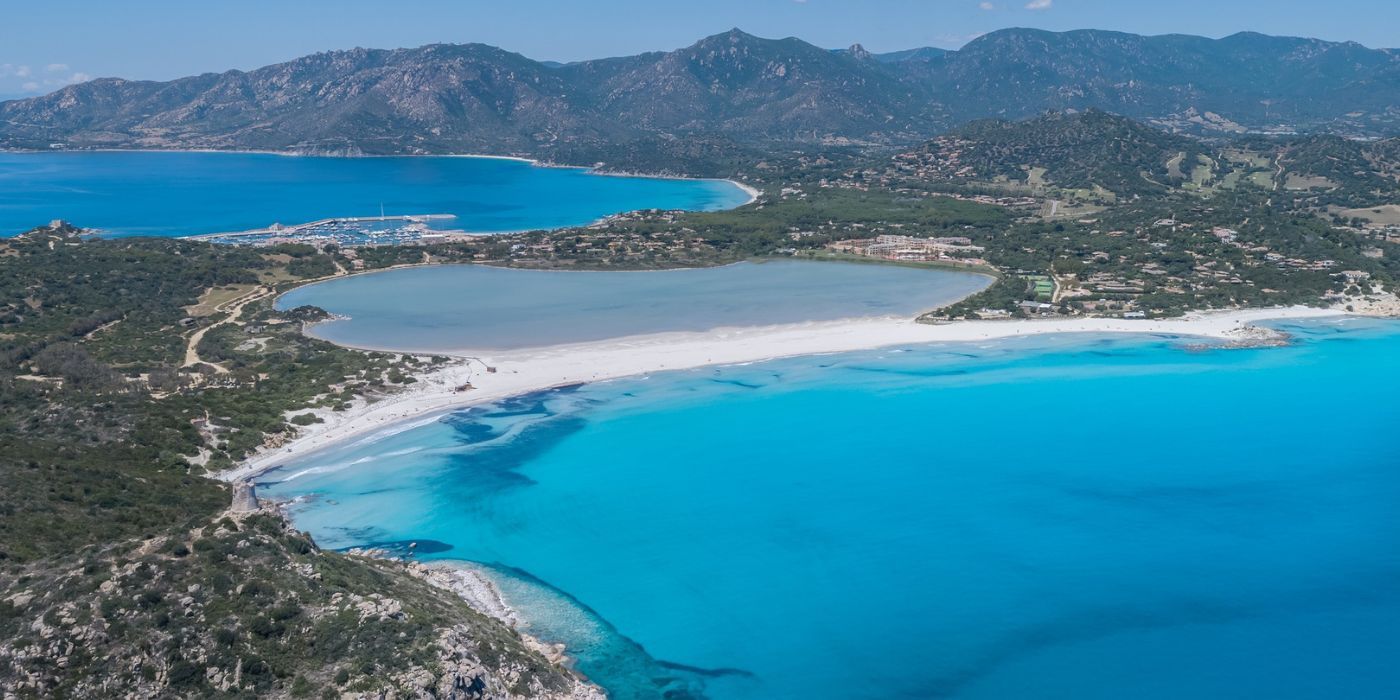
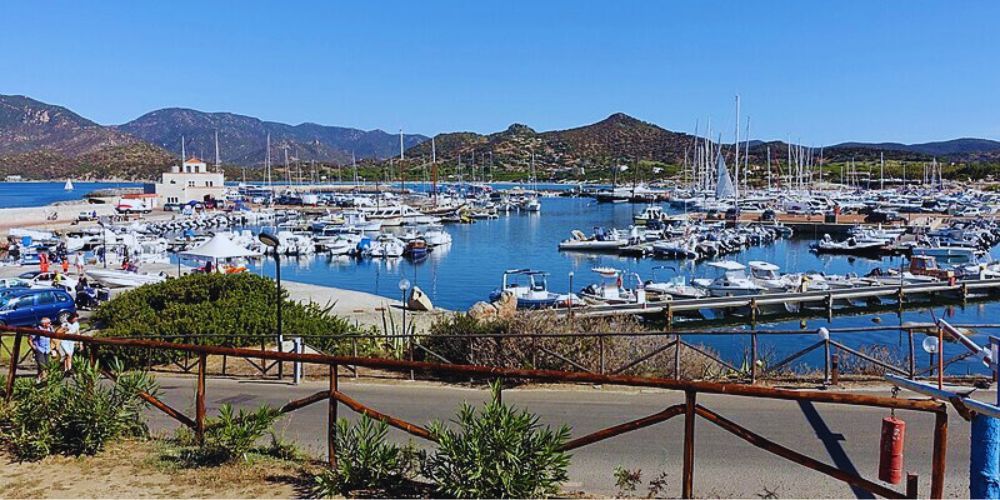
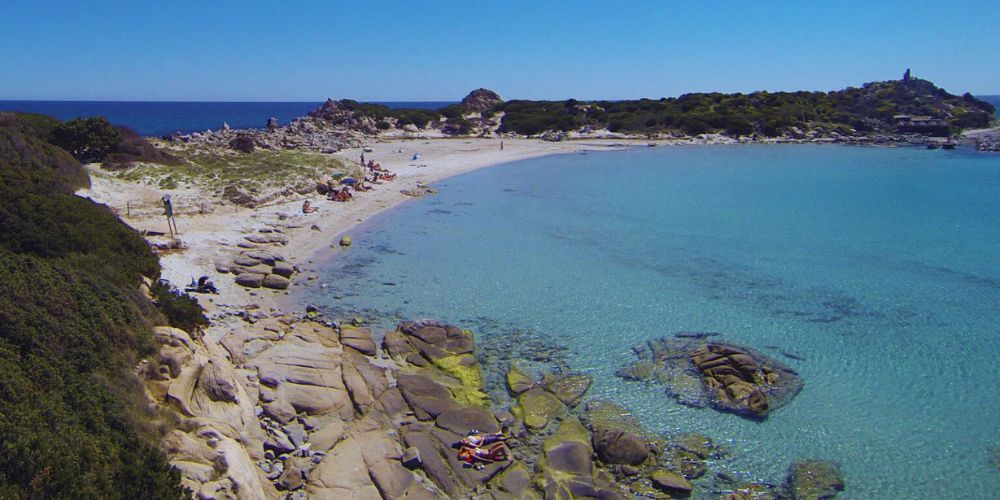
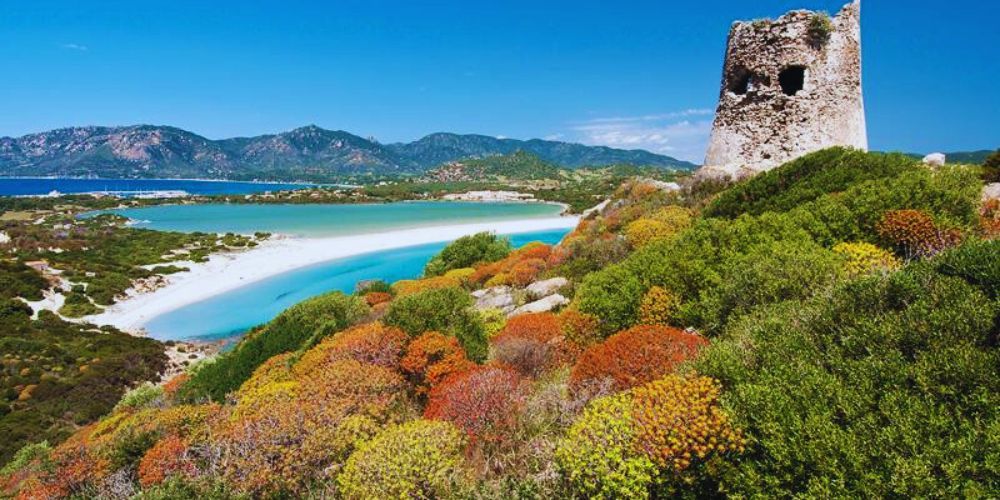
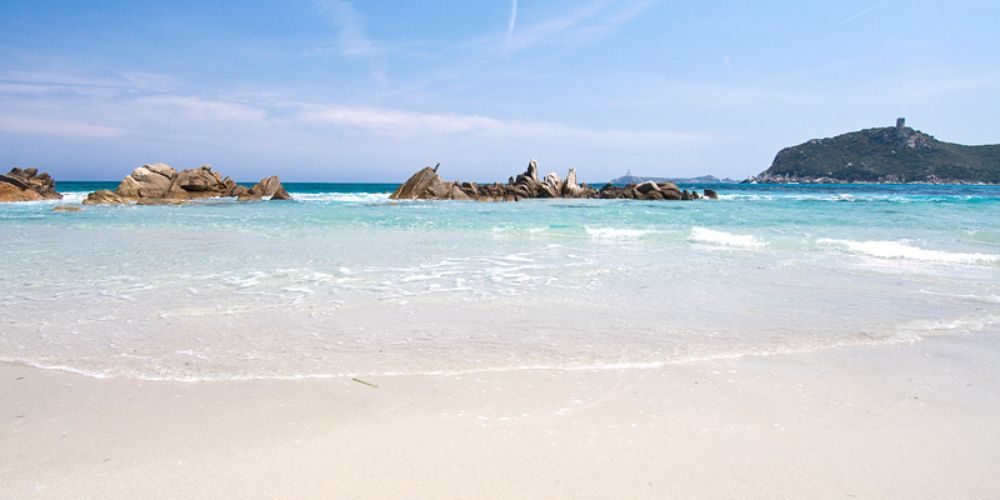
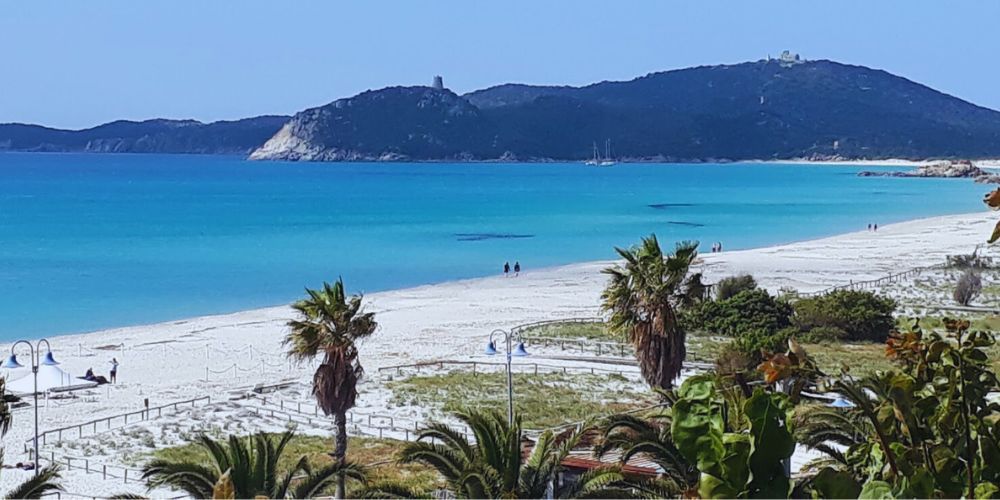
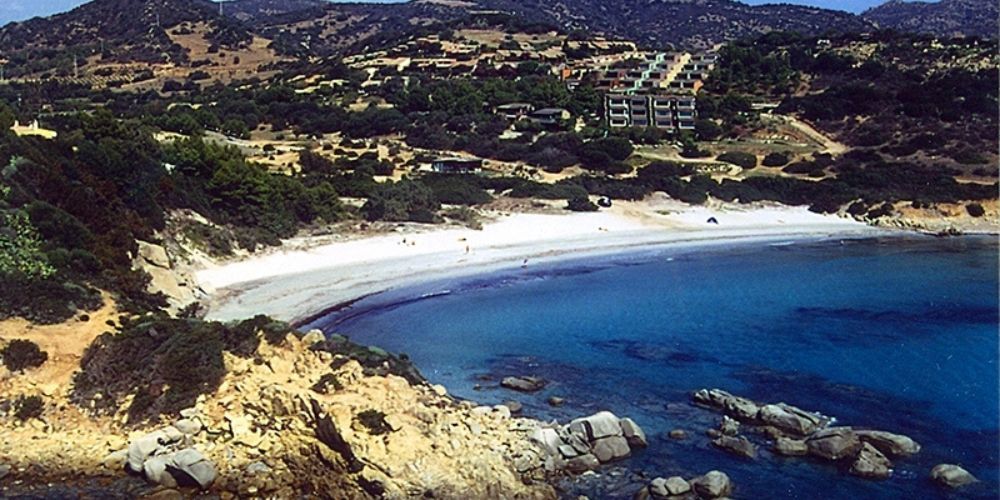
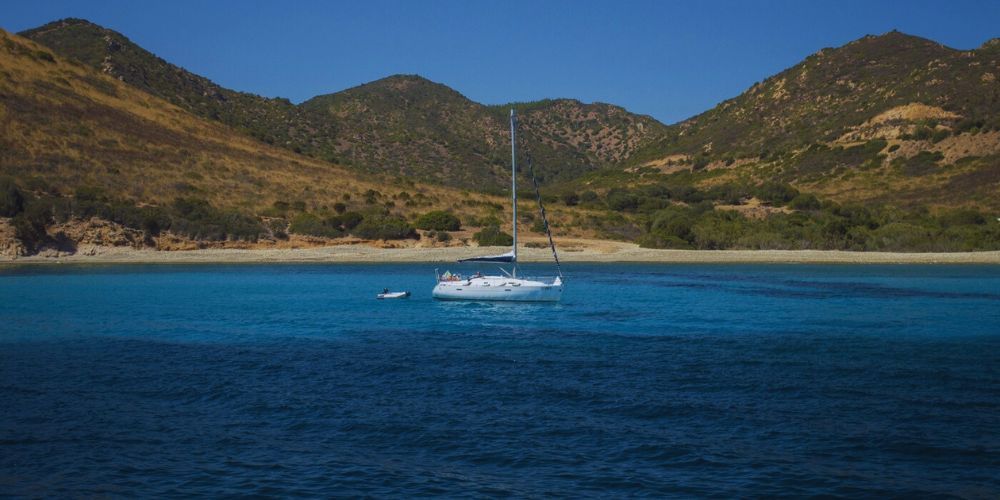
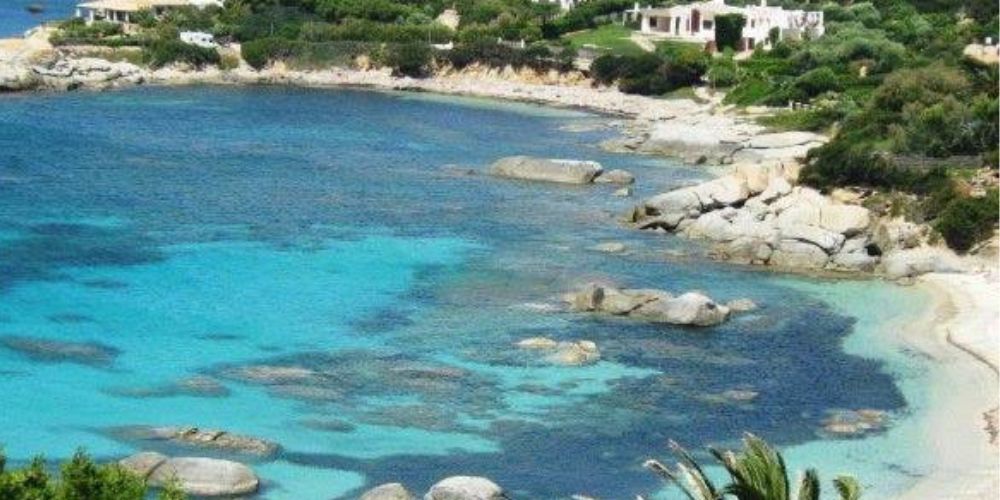
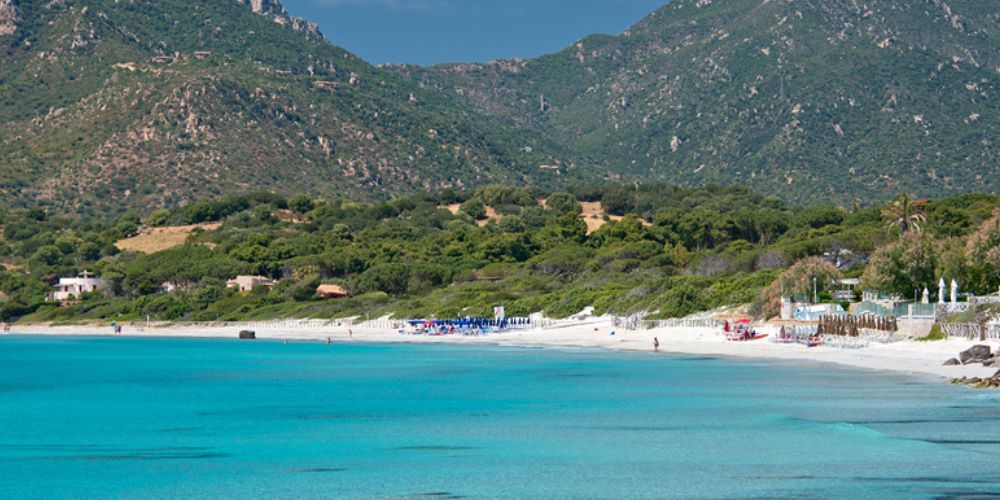
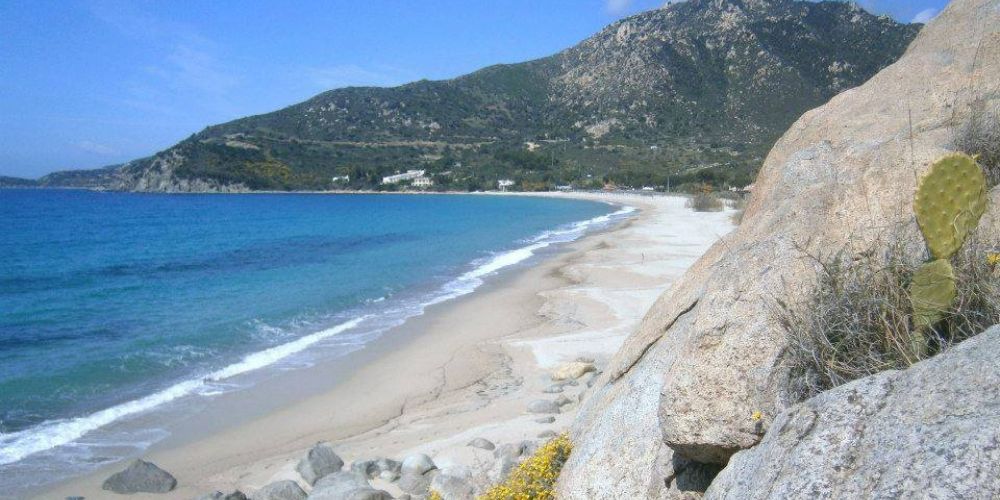
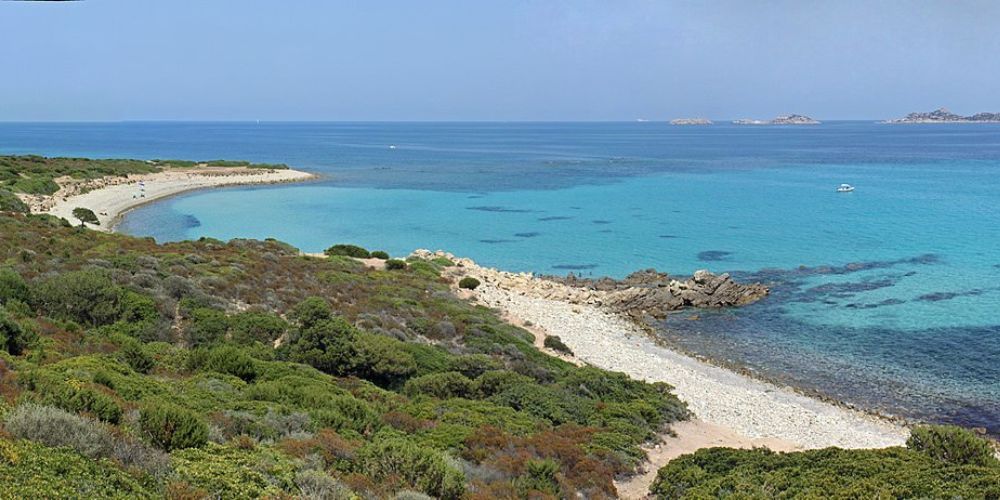
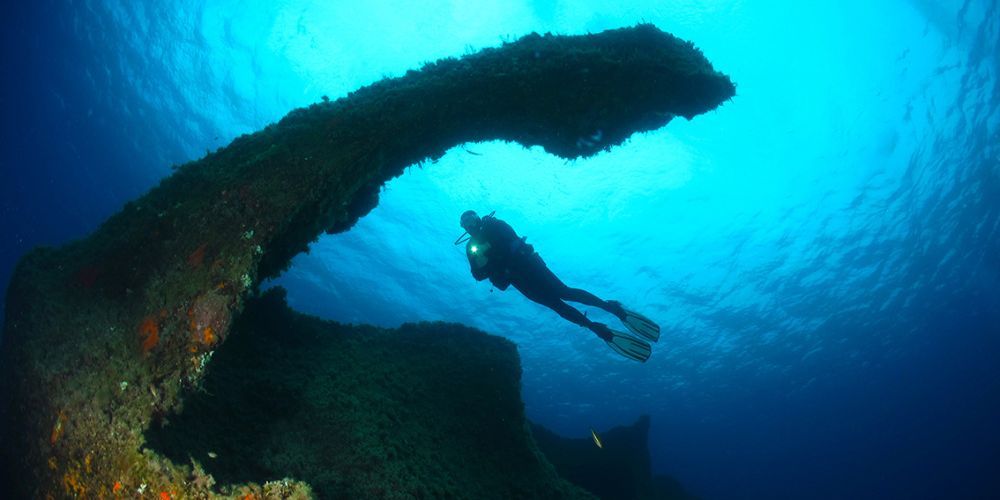
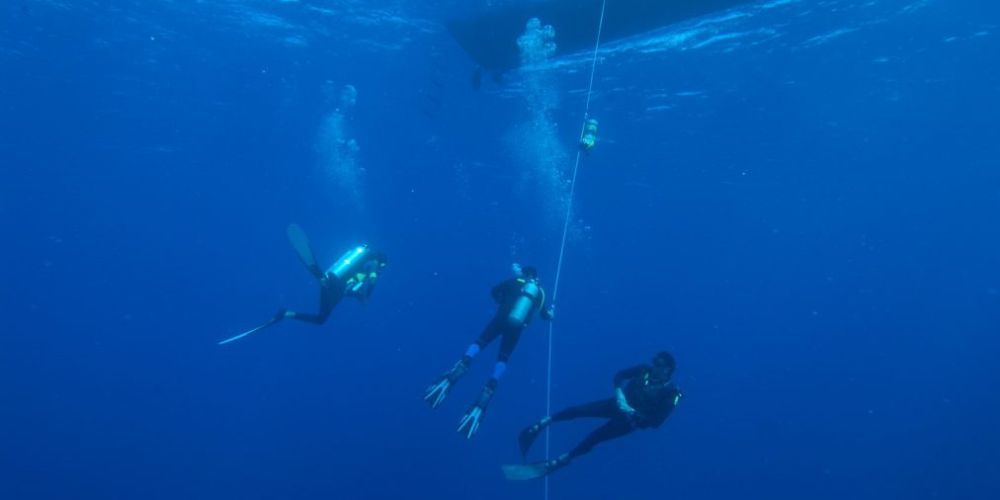
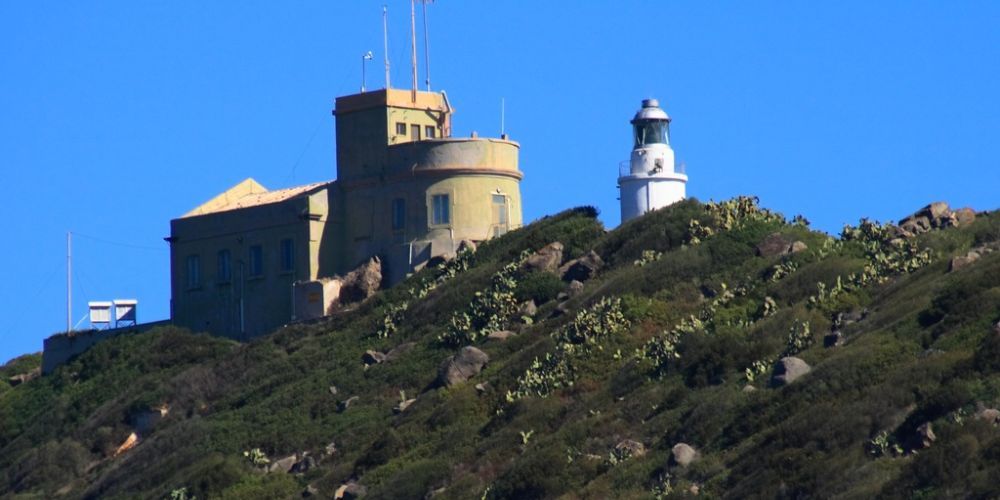
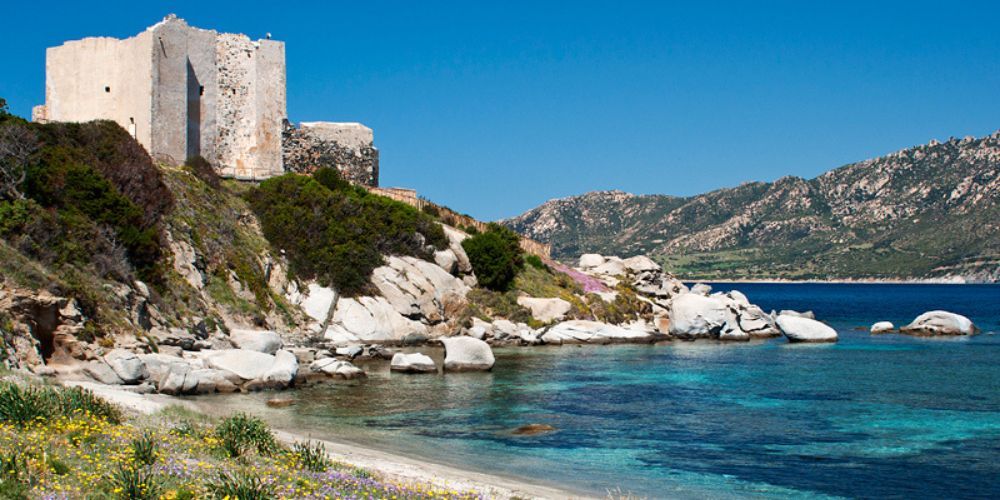
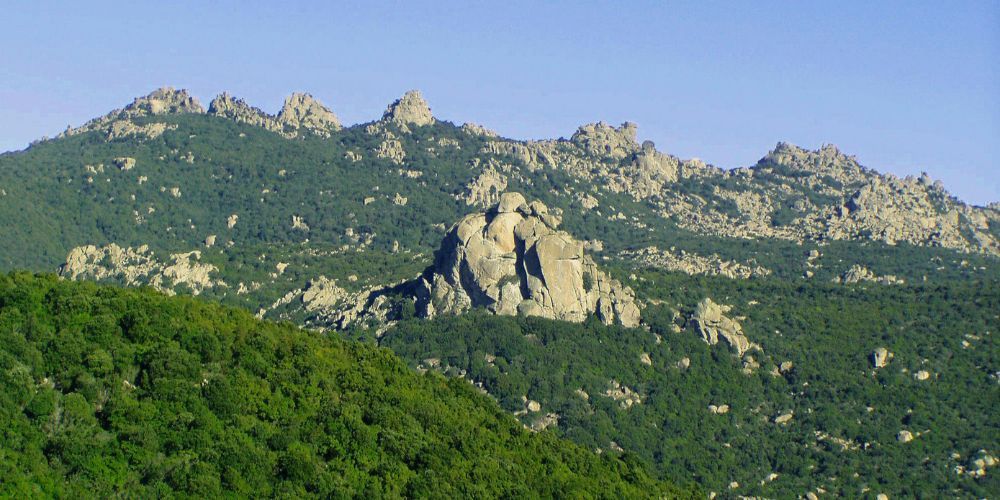
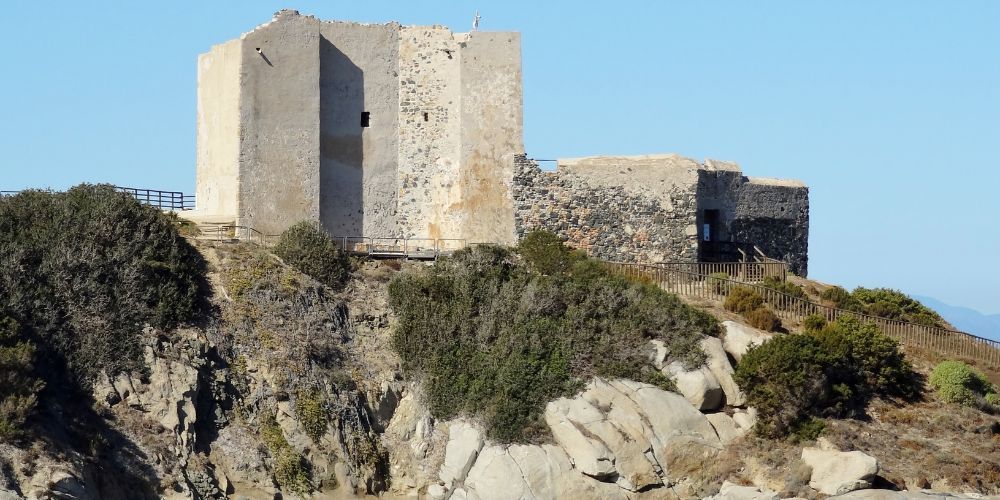
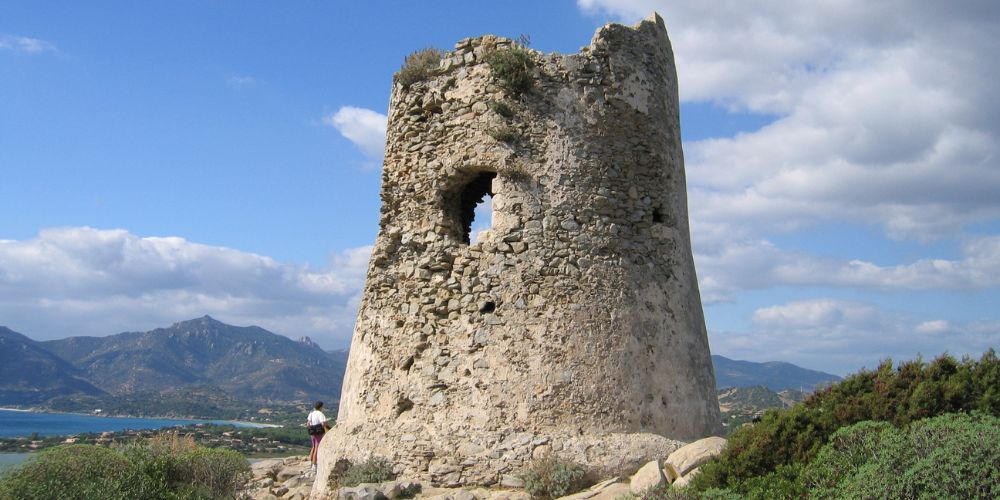
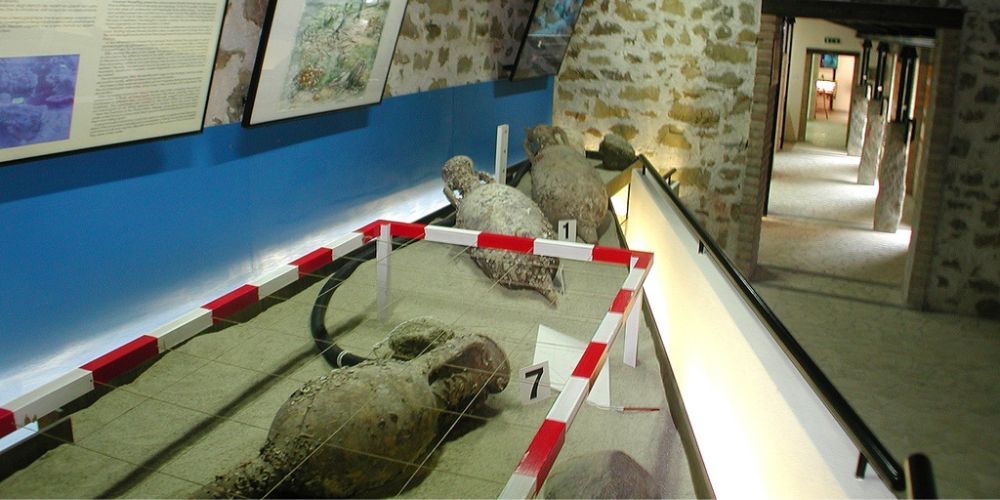
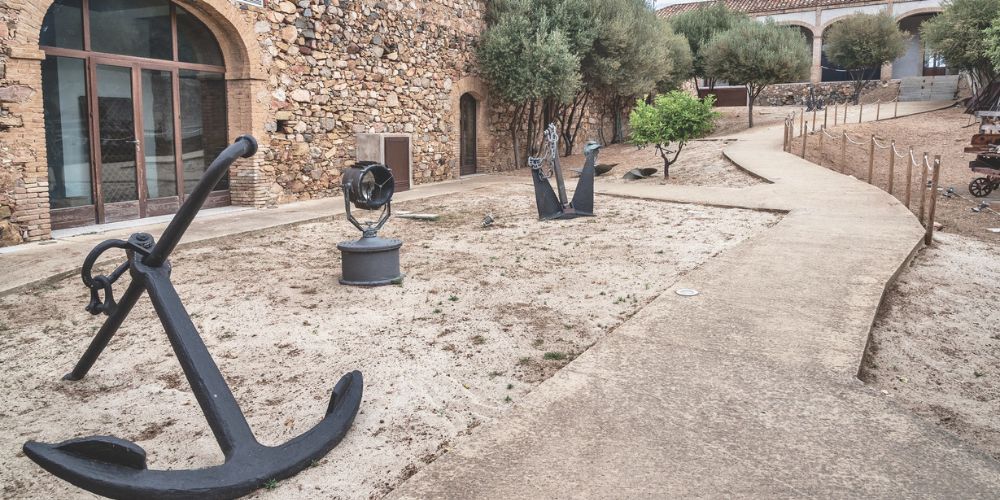
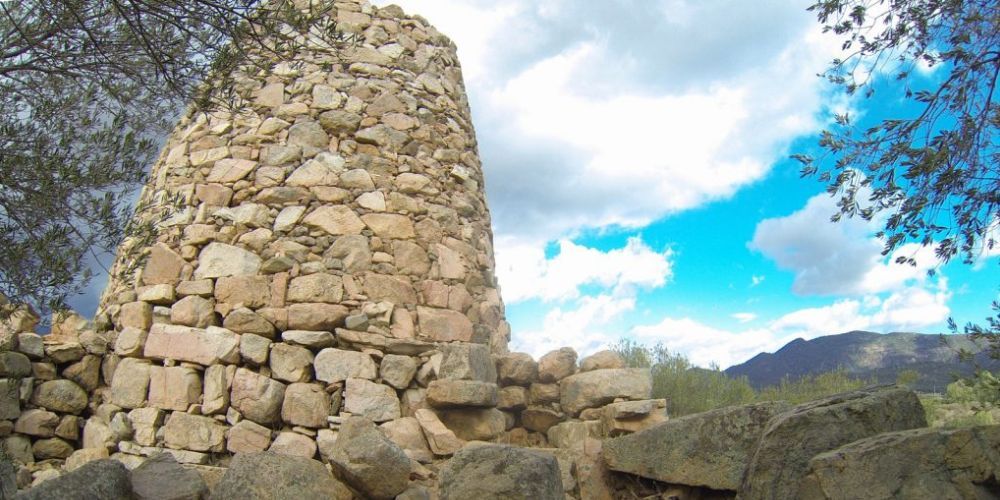
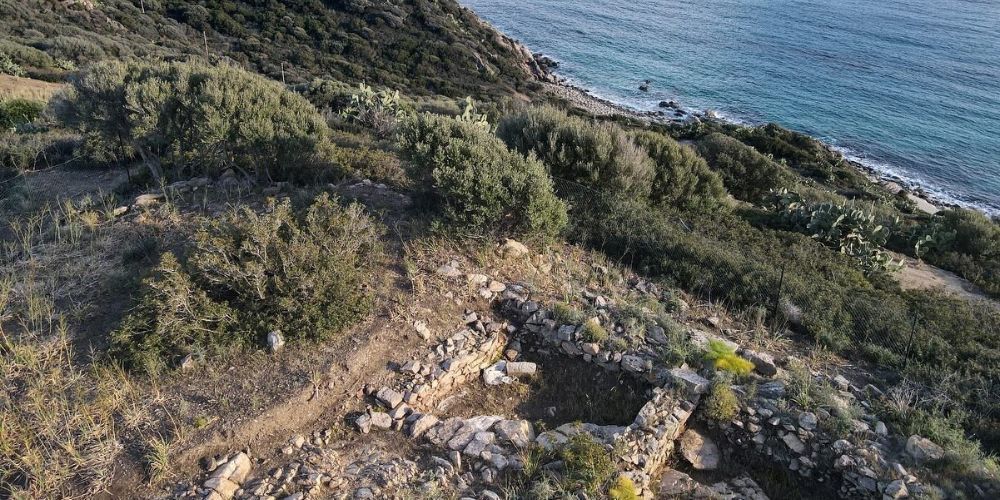
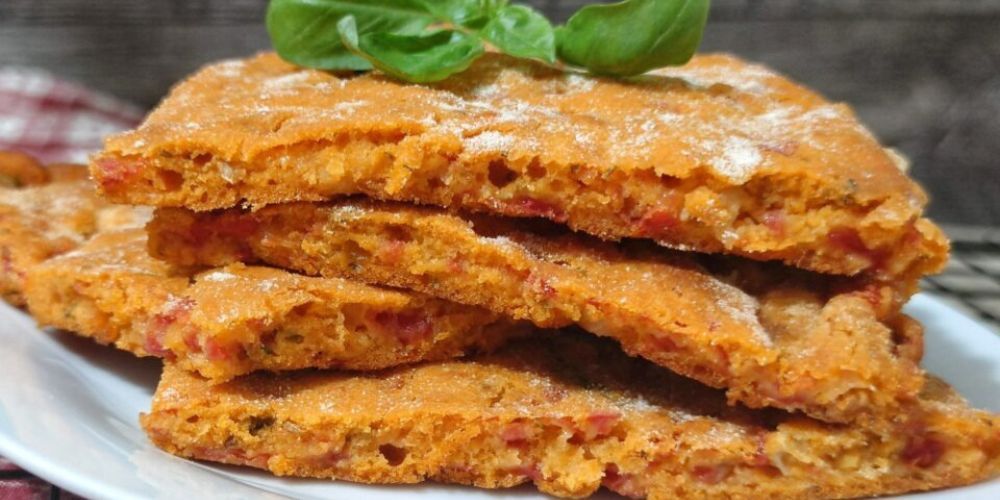
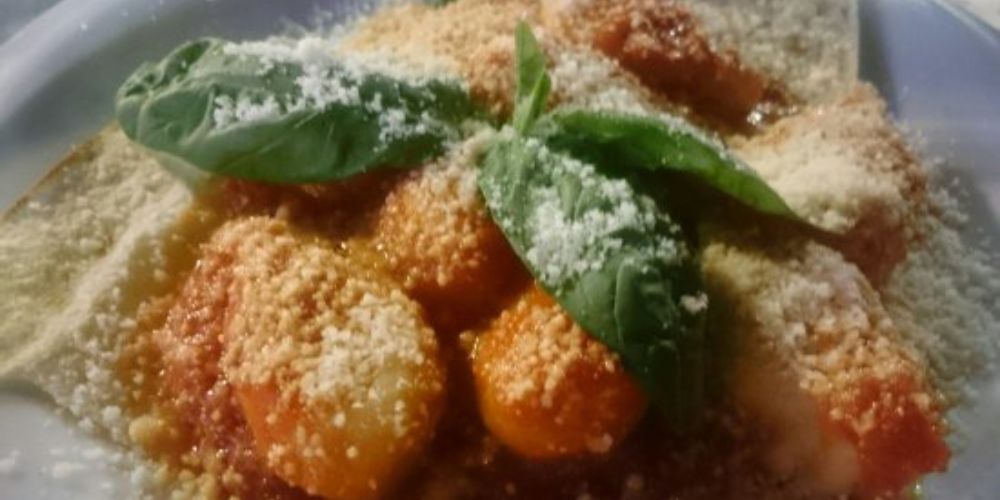
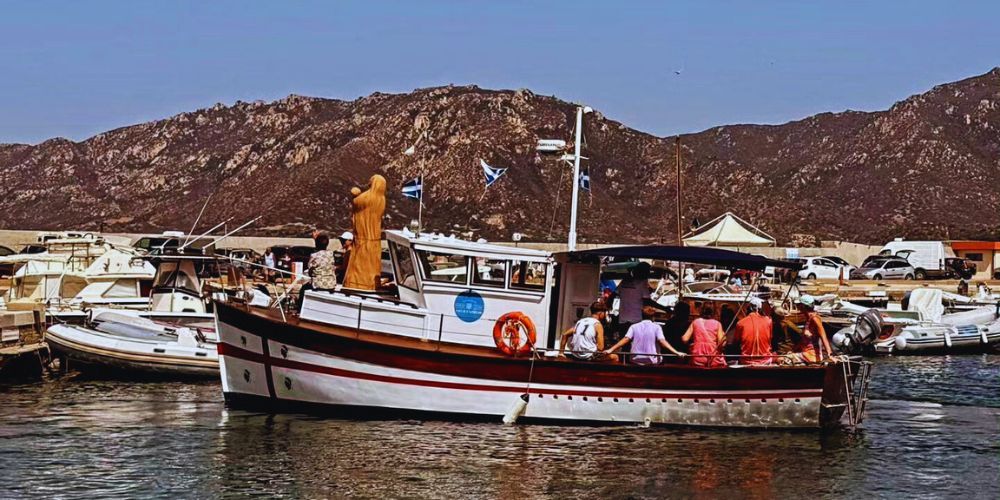
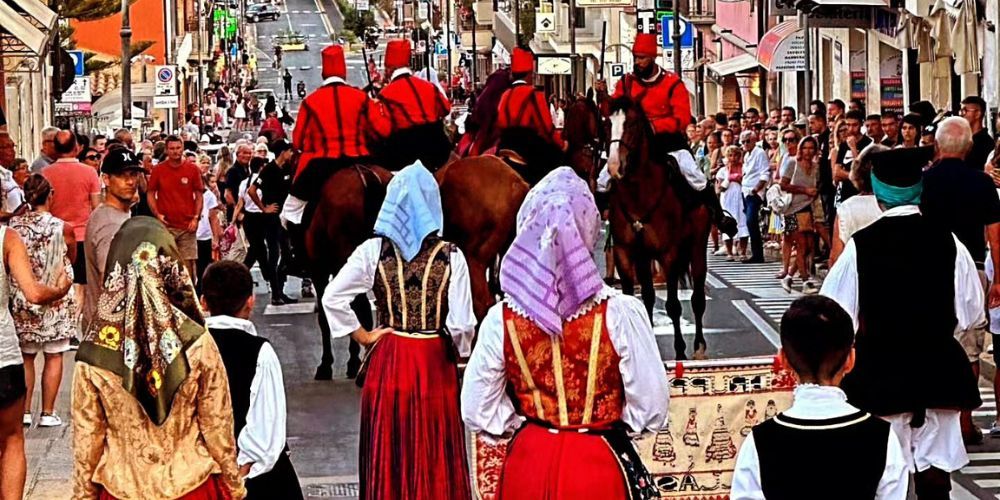
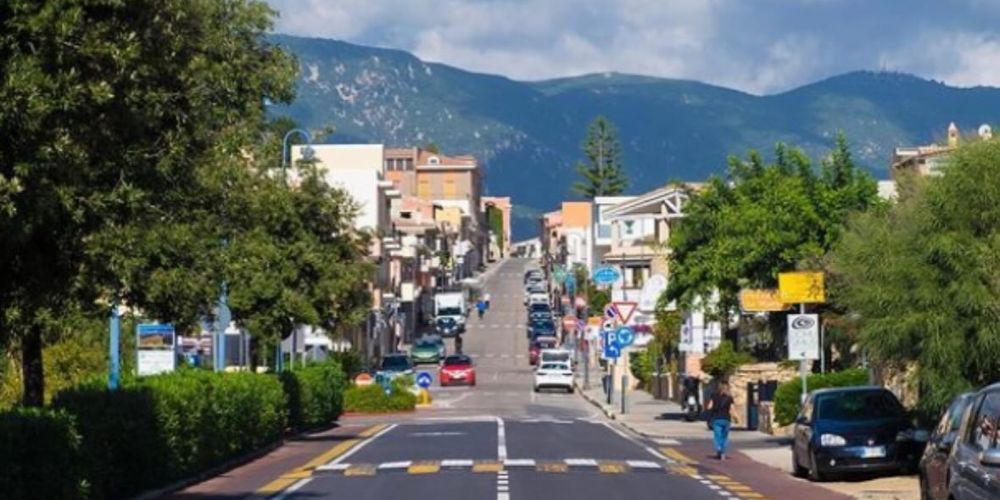
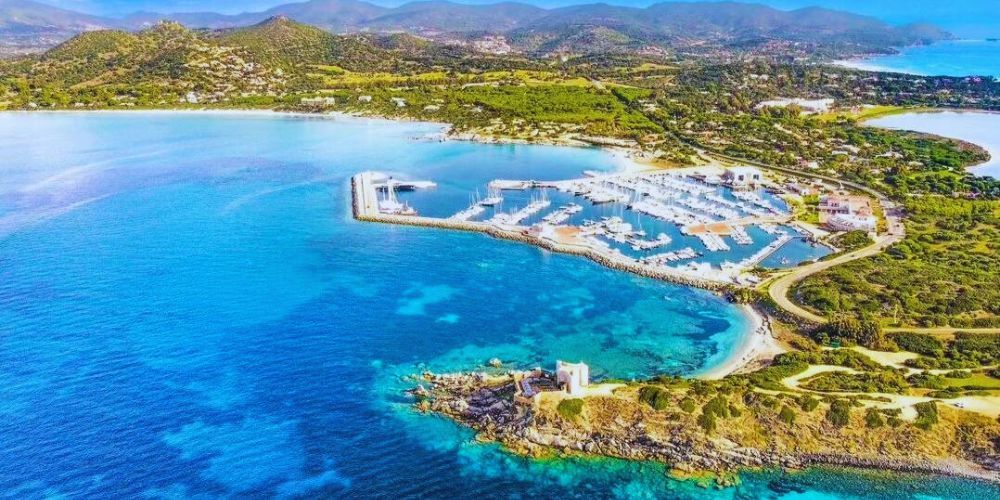
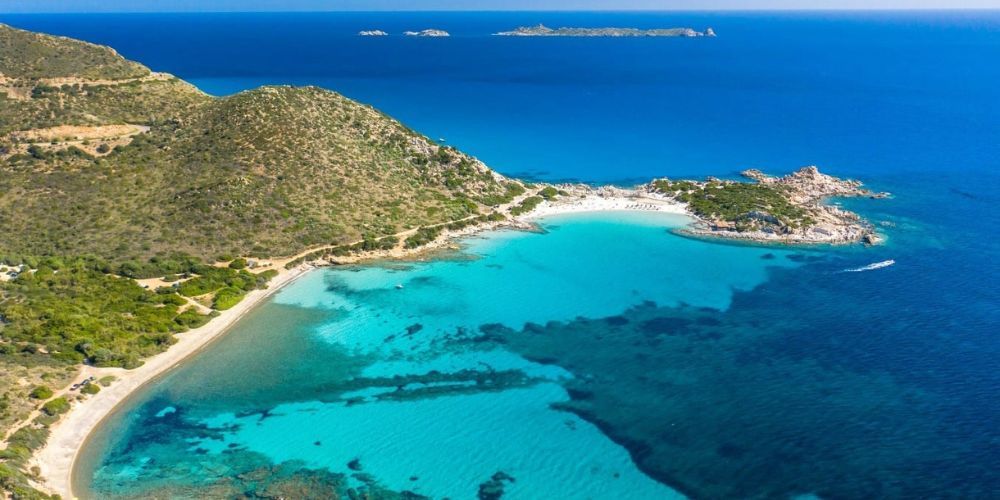
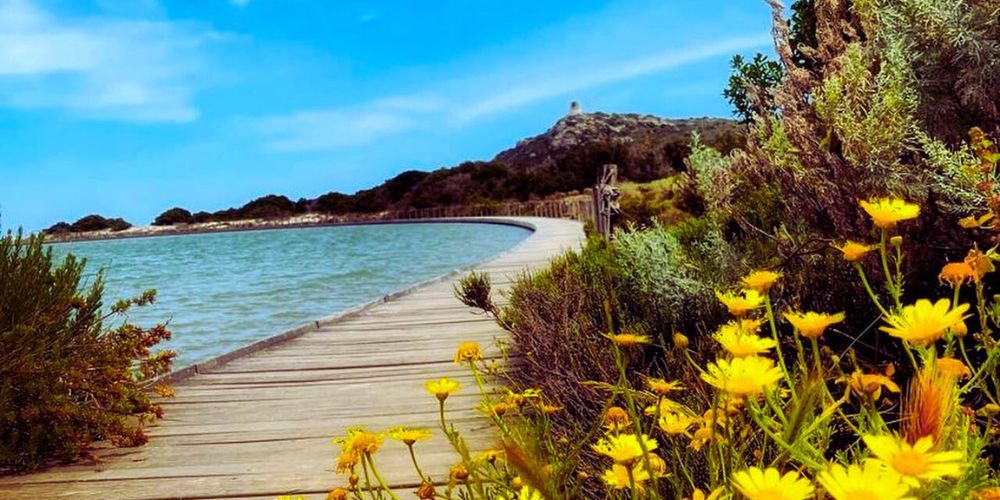

Ilaria Capatti
South East Sardinia: a complete travel guide to visit Villasimius and its most beautiful beaches. Sea, sport, culture and fabulous views.